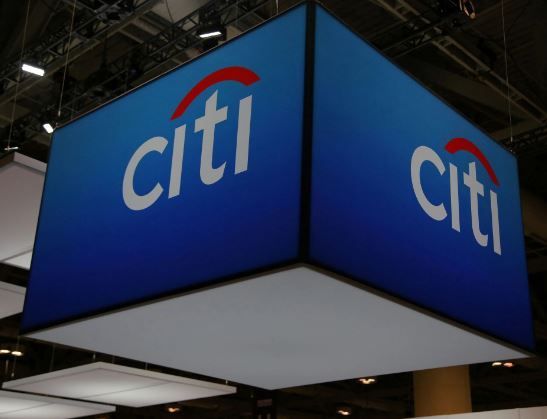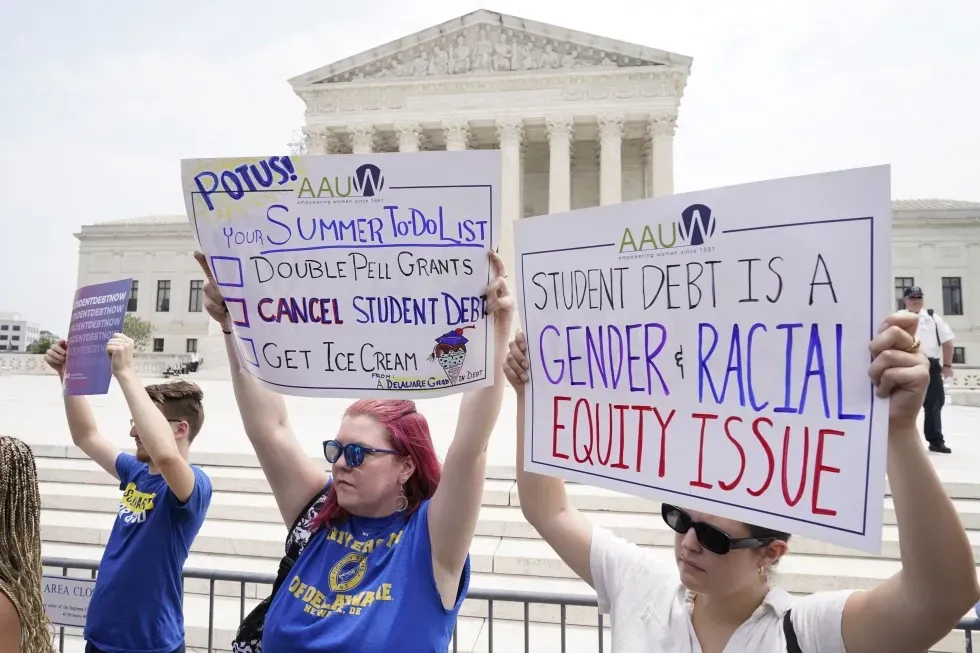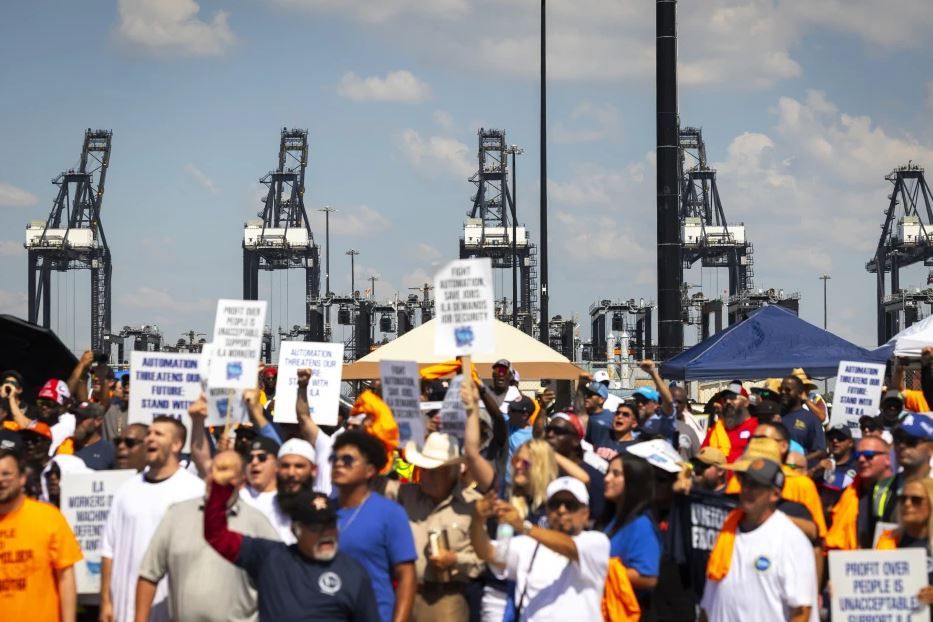US bank giants ride rate rises, keep storm clouds at bay
- By 6122ee467d22433199917c7d
- •
- 14 Apr, 2023
US bank giants ride rate rises, keep storm clouds at bay

First-quarter 2023 earnings from JPMorgan Chase & Co (JPM.N), Citigroup Inc (C.N) and Wells Fargo & Co (WFC.N) beat Wall Street expectations on Friday as consumer and corporate spending held up in the face of rate rises, although all three saw signs of a slowdown and made provisions accordingly.
"Goliath is Winning," Wells Fargo analyst Mike Mayo said in a note highlighting growth, scale and resiliency in a "uniquely strong quarter" for JPMorgan, which he called "a port in the storm" during recent banking sector tumult.
Banks are building up rainy day funds as fears of an economic slowdown mount from the U.S. Federal Reserve's aggressive interest rate hikes to tame inflation as well as the recent turmoil fueled by the failures of two mid-sized banks.
JPMorgan Chief Executive Jamie Dimon warned that while the U.S economy remains robust, the recent crisis in banking with the sudden collapse of Silicon Valley Bank (SVB) and Signature Bank last month could make lenders more conservative and at the same time impact consumer spending.
"The storm clouds that we have been monitoring for the past year remain on the horizon, and the banking industry turmoil adds to these risks," Dimon said.
Citigroup, which beat Wall Street expectations as it earned more from borrowers paying higher interest on loans, said it was prepared for a mild recession in the United States.
"It's now more likely that the U.S. will enter into a shallow recession later this year," Citigroup CEO Jane Fraser told analysts on a conference call. "That could be exacerbated in depth and duration in a more severe credit crunch."
Still, she said "the biggest unknown" was the impact of U.S. interest rates and how talks in Washington on the U.S. debt ceiling play out.
The S&P 500 bank index (.SPXBK) rose more than 3% after the results, with JPMorgan soaring 7% and Citigroup surging nearly 5%. Wells Fargo fared less favorably, down 0.3%, and regional banks including Zions (ZION.O) and First Republic (FRC.N) fell.
The KBW regional bank index (.KRX) was down 2.5%.
One area where it has proven harder for the big banks to profit in 2023 has been investment banking, which was reflected in JPMorgan's business with a 24% fall in revenue at the unit.
Global mergers and acquisitions (M&A) activity shrank to its lowest level in more than a decade in the first quarter, as rising interest rates, high inflation and fears of a recession soured the appetite for dealmaking.
M&A volumes during the first quarter slumped 48% to $575.1 billion as of March 30, compared to $1.1 trillion during the same period last year, according to data from Dealogic.
TROUBLE AHEAD?
JPMorgan beat market expectations with a 52% rise in profit to $12.62 billion, or $4.10 per share, in the three months to the end of March, while its loan loss provisions increased by 56% from last year to $2.3 billion. Net interest income, a measure of how much a bank earns from lending, surged 49% to $20.8 billion.
Citigroup was also helped by the effects of the Fed's tighter monetary policy, although it set aside $241 million to cover potential loan losses compared to a reserve release of $138 million a year ago.
Meanwhile, Wells Fargo set aside $1.21 billion in the quarter to cover for potential loan losses, compared to a release of $787 million a year earlier.
Wells Fargo said its provision included a $643 million rise in the allowance for credit losses, reflecting an increase for commercial real estate lending, primarily office loans, as well as an increase for credit card and auto loans.
"While most consumers remain resilient, we've seen some consumer financial health trends gradually weakening from a year ago," Mike Santomassimo, Wells Fargo finance chief, told analysts. The company is taking action "to position the portfolio for a slowing economy," he said.
Meanwhile, PNC Financial Services Group (PNC.N) reported an 18.5% rise in first-quarter profit, as the Fed's rate hikes fueled a surge in the U.S. regional lender's net interest income (NII).
And in another key part of the financial services sector, BlackRock Inc (BLK.N) reported an 18% drop in first-quarter profit but beat analysts' estimates as investors continued to pour money into its funds, cushioning the hit to fee income from the banking rout that rocked global markets.
New York-based BlackRock, the world's largest asset manager which makes most of its money from fees on investment advisory and administration services, ended the first quarter with $9.1 trillion in assets under management, down from $9.57 trillion a year earlier but up from $8.59 trillion in the fourth quarter.
More banking results are due over the coming week, including Bank of America (BAC.N) and Goldman Sachs (GS.N) on Tuesday and Morgan Stanley (MS.N) on Wednesday.
Investors are also anxiously awaiting reports from several regional banks - the hardest-hit group during the banking tumult last month - for more clarity on the outlook ahead for them.
Finanicial broker Charles Schwab (SCHW.N) is expected to report a rise in revenue when it announces results on Monday.
Meanwhile Zions Bancorp (ZION.O) also reports on Wednesday.
First Republic Bank (FRC.N), which was shored up by a group of 11 lenders that injected $30 billion into it after its shares plunged during the crisis last month, is due to report results on April 24.
SOURCE: REUTERS

Savannah Britt owes about $27,000 on loans she took out to attend college at Rutgers University, a debt she was hoping to see reduced by President Joe Biden’s student loan forgiveness efforts.
Her payments are currently on hold while courts untangle challenges to the loan forgiveness program. But as the weeks tick down on Biden’s time in office, she could soon face a monthly payment of up to $250.
“With this new administration , the dream is gone. It’s shot,” said Britt, 30, who runs her own communications agency. “I was hopeful before Tuesday. I was waiting out the process. Even my mom has a loan that she took out to support me. She owes about $18,000, and she was in the process of it being forgiven, but it’s at a standstill.”
President-elect Donald Trump
and his fellow Republicans have criticized Biden’s loan forgiveness efforts, and lawsuits by GOP-led states have held up plans for widespread debt cancellation. Trump has not said what he would do on loan forgiveness, leaving millions of borrowers facing uncertainty over their personal finances.
The economy
was an important issue in the election, helping to propel Trump to victory. But for borrowers, concerns about their finances extend beyond inflation to include their student debt, said Persis Yu, managing counsel for the Student Borrower Protection Center.
“That’s a big part of what is making life unaffordable for them is this burden of expenses that they can’t seem to get out from under,” Yu said.
Student loan cancellation was not a focus of the campaign for either Trump or Vice President Kamala Harris , who steered clear of the issue at her political events. The issue came up just once in the September presidential debate, when Trump hammered Harris and Biden for failing to deliver their promise of widespread forgiveness. Trump called it a “total catastrophe” that “taunted young people.”
Biden promised the student loan cancellation program during his run for the presidency. From its launch, Biden’s loan forgiveness faced relentless pushback from opponents who said it heaped advantage on elites and came at the expense of those who repaid their loans or did not attend college.
Biden’s first plan to cancel up to $20,000 for millions of people was blocked by the Supreme Court last year. A second, narrower plan has been halted by a federal judge after Republican-led states sued. A separate policy intended to lower loan payments for struggling borrowers has been paused by a judge, also after Republican-controlled states challenged it.
Overall, Biden’s efforts were relatively unpopular, even among those with student loans. Three in 10 U.S. adults said they approved of how Biden had handled student loan debt, according to a poll this spring from the University of Chicago Harris School of Public Policy and The Associated Press-NORC Center for Public Affairs Research . Four in 10 disapproved. The others were neutral or didn’t know enough to say.
Project 2025, the blueprint for a hard-right turn in American government that aligns with some Trump priorities , calls for getting the federal government out of the student loan business and doing away with repayment plans that pre-date the Biden administration.
Even without directly addressing student loans, Trump has made promises that would affect them. He has pledged to eliminate the U.S. Department of Education, which manages the $1.6 trillion federal student loan portfolio. It’s unclear which entity would take that responsibility if the department were eliminated, which would require approval from Congress.Yu noted the Biden administration managed to cancel student loans for about 5 million borrowers , even though the signature forgiveness effort has been blocked. The administration did it by leaning into loan cancellation programs already in effect. For example, an existing student loan forgiveness program for public service workers has granted relief to more than 1 million Americans, up from just 7,000 who were approved before it was updated by the Biden administration two years ago.
“A lot of the cancellation that we saw in the last couple of years was because the Biden administration was committed to making the programs that are actually enshrined in law work for people,” Yu said.
The challenge of repaying the $23,000 she has borrowed to study education policy at Columbia University weighs on 23-year-old Zaakirah Rahman, but she said she did not see an alternative to pursing an advanced degree.
“It feels like the threshold for things is getting higher and suddenly getting a bachelor’s degree isn’t enough,” she said. “It’s expensive. It’s super expensive. But it seems like you don’t really have a choice.”
Sabrina Calazans, 27, owes about $30,000 on federal student loans from her college days at Arcadia University in Pennsylvania. Her payments also have been on hold, but she could soon face a monthly payment of over $300.
“As a first-generation American, I live at home with my family, I contribute to our household finances, and that payment is a lot for me and so many others like me,” said Calazans, who is originally from Brazil.
In her role as managing director for Student Debt Crisis Center, Calazans said she has been telling people to stay up to date on developments by using the loan simulator on the Federal Student Aid website and reading updated information on forgiveness qualifications and repayment programs.
“There’s a lot of confusion about student loans,” Calazans said, and not just among young people. “We’re seeing a lot of parents take out more debt for their children to be able to go to school. We’re seeing older folks go back to school and having to take out loans as well.”
SOURCE: AP NEWS

U.S. stocks are rallying Tuesday as voters head to the polls on the last day of the presidential election and as more data piles up showing the economy remains solid.
The S&P 500 was up 1.2% in afternoon trading, rising closer to its record set last month . The Dow Jones Industrial Average was up 431 points, or 1%, as of 12:50 p.m. Eastern time, while the Nasdaq composite was 1.5% higher.
Treasury yields also rallied after a report showed growth for retailers, transportation companies and other businesses in the U.S. services industries accelerated last month. That was despite economists’ expectations for a slowdown, and the Institute for Supply Management said it was the strongest growth since July 2022.
The strong data offered more hope that the U.S. economy will remain solid
and avoid a long-feared recession
following the worst inflation in generations
.
Excitement about the artificial-intelligence boom also helped lift the stock market, as it has for much of the last year. Software company Palantir Technologies jumped 23% after delivering bigger profit and revenue than analysts expected for the latest quarter. It’s an industry known for thinking and talking big, and CEO Alexander Karp said, “We absolutely eviscerated this quarter, driven by unrelenting AI demand that won’t slow down.”
It helped offset a 6.3% drop for NXP Semiconductors. The Dutch company fell to one of the largest losses in the S&P 500 after warning that weakness it saw in the industrial and other markets during the latest quarter is spreading to Europe and the Americas.
The market’s main event, though, is the election, even if the result may not be known for days, weeks or months as officials count all the votes. Such uncertainty could upset markets, along with an upcoming meeting by the Federal Reserve on interest rates later this week. The widespread expectation is for it to cut its main interest rate for a second straight time, as it widens its focus to keeping the job market solid in addition to getting inflation under control.
Despite all the uncertainty heading into the final day of voting, many professional investors suggest keeping the focus on the long term and what corporate profits will do over the next few years and a decade. The broad U.S. stock market has historically tended to rise regardless of which party wins the White House, even if each party’s policies help and hurt different industries’ profits underneath the surface.
Since 1945, the S&P 500 has risen in 73% of the years where a Democrat was president and 70% of the years when a Republican was the nation’s chief executive, according to Sam Stovall, chief investment strategist at CFRA.
The U.S. stock market has tended to rise more in magnitude when Democrats have been president, in part because a loss under George W. Bush’s term hurt the Republican’s average. Bush took over as the dot-com bubble was deflating and exited office when the 2008 global financial crisis and Great Recession were devastating markets.
The S&P 500 ended up rising 69.6% from that Election Day in 2020 through Monday, following President Joe Biden’s win. It set its latest all-time high on Oct. 18, as the U.S. economy bounced back from the COVID-19 pandemic and managed to avoid a recession despite a jump in inflation.
In the prior four years, the S&P 500 rose 57.5% from Election Day 2016 through Election Day 2020, in part because of cuts to tax rates signed by Trump.
Investors have already made moves in anticipation of a win by either Trump or Vice President Kamala Harris. The value of the Mexican peso might fall if Trump’s tariffs on Mexico come to fruition, for example.
But Paul Christopher, head of global investment strategy at Wells Fargo Investment Institute, suggests not getting caught up in the pre-election moves, or even those immediately after the polls close, “which we believe will face inevitable tempering, if not outright reversals, either before or after Inauguration Day.”
In the bond market, the yield on the 10-year Treasury rose to 4.34% following Tuesday morning’s strong report on U.S services businesses from 4.29% late Monday.
In stock markets abroad, indexes were mixed in Europe and Asia. The moves were mostly modest outside of jumps of 2.3% in Shanghai and 2.1% in Hong Kong.

Some manufacturers and retailers are urging President Joe Biden to invoke a 1947 law as a way to suspend a strike by 45,000 dockworkers that has shut down 36 U.S. ports from Maine to Texas.
At issue is Section 206 of the Labor Management Relations Act of 1947, better known as the Taft-Hartley Act. The law authorizes a president to seek a court order for an 80-day cooling-off period for companies and unions to try to resolve their differences.
Biden has said, though, that he won’t intervene in the strike.
Taft-Hartley was meant to curb the power of unions
The law was introduced by two Republicans — Sen. Robert Taft of Ohio and Rep. Fred Hartley Jr. of New Jersey — in the aftermath of World War II. It followed a series of strikes in 1945 and 1946 by workers who demanded better pay and working conditions after the privations of wartime.
President Harry Truman opposed Taft-Hartley, but his veto was overridden by Congress.
In addition to authorizing a president to intervene in strikes, the law banned “closed shops,” which require employers to hire only union workers. The ban allowed workers to refuse to join a union.
Taft-Hartley also barred “secondary boycotts,’' thereby making it illegal for unions to pressure neutral companies to stop doing business with an employer that was targeted in a strike.
It also required union leaders to sign affidavits declaring that they did not support the Communist Party.
Presidents can target a strike that may “imperil the national health and safety”
The president can appoint a board of inquiry to review and write a report on the labor dispute — and then direct the attorney general to ask a federal court to suspend a strike by workers or a lockout by management.
If the court issues an injunction, an 80-day cooling-off period would begin. During this period, management and unions must ”make every effort to adjust and settle their differences.’'
Still, the law cannot actually force union members to accept a contract offer.
Presidents have invoked Taft-Hartley 37 times in labor disputes
According to the Congressional Research Service, about half the time that presidents have invoked Section 206 of Taft-Hartley, the parties worked out their differences. But nine times, according to the research service, the workers went ahead with a strike.
President George W. Bush invoked Taft-Hartley in 2002 after 29 West Coast ports locked out members of the International Longshore and Warehouse Union in a standoff. (The two sides ended up reaching a contract.)
Biden has said he won’t use Taft-Hartley to intervene
Despite lobbying by the National Association of Manufacturers and the National Retail Federation, the president has maintained that he has no plans to try to suspend the dockworkers’ strike against ports on the East and Gulf coasts.
On Wednesday, before leaving Joint Base Andrews for an air tour of North Carolina to see the devastation from Hurricane Helene, Biden said the port strike was hampering efforts to provide emergency items for the relief effort.
“This natural disaster is incredibly consequential,” the president said. “The last thing we need on top of that is a man-made disaster — what’s going on at the ports.”
Biden noted that the companies that control East and Gulf coast ports have made huge profits since the pandemic.
“It’s time for them to sit at the table and get this strike done,” he said.
Though many ports are publicly owned, private companies often run operations that load and unload cargo.
William Brucher, a labor relations expert at Rutgers University, notes that Taft-Hartley injunctions are “widely despised, if not universally despised, by labor unions in the United States.”
And Vice President Kamala Harris is relying on support from organized labor in her presidential campaign against Donald Trump.
If the longshoremen’s strike drags on long enough and causes shortages that antagonize American consumers, pressure could grow on Biden to change course and intervene. But experts like Brucher suggest that most voters have already made up their minds and that the election outcome is “really more about turnout” now.
Which means, Brucher said, that “Democrats really can’t afford to alienate organized labor.”

